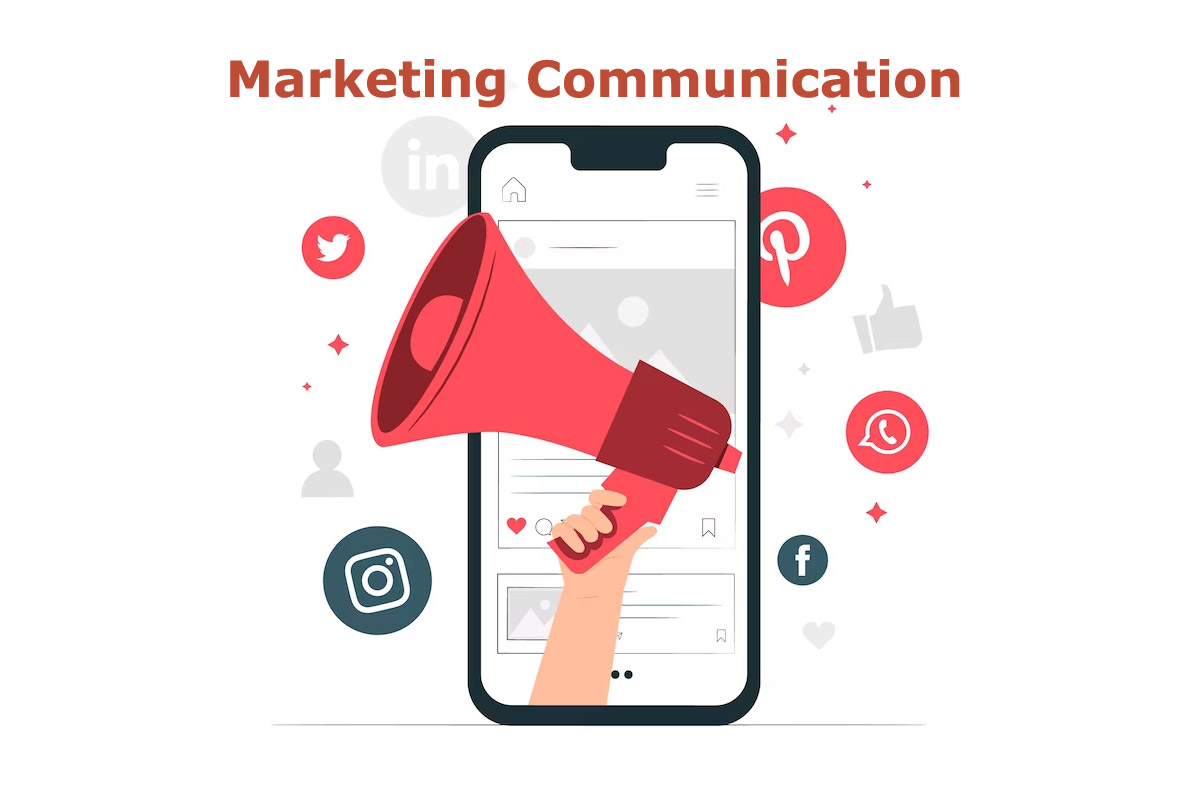Marketing Communication
Marketing communication is a process where the consumers are attracted to products and services of different manufacturers or producers. It is used to ask customers to buy these products and services, and it reminds the potential customers about the products and services of the manufacturers.
Marketing communication refers to organizations’ strategies, tactics, and activities to convey messages about their products, services, brands, or overall business to their target audiences. The goal of marketing communication is to inform, persuade, and engage potential customers, as well as to build and maintain positive relationships with existing customers.
What is the Process of Marketing Communication?
To develop effective marketing communication, you must coordinate well with consumers since consumers act as a crucial point in this process. The communication process needs to be one-on-one so that both parties can give their opinions.
The steps followed in effective communication are:
- Identification of target audience
- Defining communication objectives
- Designing the communications
- Choosing communications platforms
- Deciding the budget
- Deciding Marketing communication mix
- Measuring results
Identification of Target Audience for Marketing Communication
The primary marketing communication step is identifying the target audience in developing effective marketing communication. This is the critical step since everything depends on and for your audience. So, it is essential to understand the target audience and their interest, as it can significantly impact their perspective on the product.
Defining Communication Objectives
Any marketer aims to achieve their complete communication objectives. Marketing communication will help marketers take buyers through different stages and request them to purchase and repurchase. The marketer must know the buyer’s steps and what set they need to be taken.
Determining effective marketing communication is the second step. Note this depends on the brand’s stage in the product life cycle and the communication tool used. Different organizations design different communication objectives. Some objectives you can follow are developing a good attitude, attracting consumers, and requesting favors. These communication objectives are used as a benchmark to evaluate the success or failure. They are also used to make essential budgets, innovation, and other decisions.
Designing the Communications
Once you have decided on the communication objectives, the next step is to design a compelling message for the target audience. It would help if you agreed on different statements depending on your audience. The message structure should go like this: motivate the customer to get involved and think about the product. The second step is to disclose not only the positive side of the product but also some negative pointers so they can build trust in you, and the last one is to bring a strong argument for the product.
Choosing Communication Platforms
Once you pass the previous step, the next step is through which the message will be trans-admitted to your consumers or audience. Tees communication channels are also defined as various media. And if you choose the wrong media for your marketing communication, no matter how good the message is, it won’t reach the right people. Examples of communication channels are television, billboards, and social media platforms. These are examples of non-personal communications. Examples of personal communication channels are email, text messaging, and more.
Deciding the Budget
You’ll need to set a good budget for your marketing communication. Deciding how much expenditure should be planned in the communication budget is challenging. But you can have a rough idea about other things, Like the cost of promotional tools in different media channels, sales activities, and more.
Deciding Marketing Communication Mix
So, when discussing marketing communication mix, it is about choosing the right media mix to establish a pattern that will lead to minimum utilization and still achieve the firm’s corporate objective. Making proper advertising decisions, selling public relations, and direct marketing are essential. And also, as we all know, different media may be used at various stages of a product’s life to fulfill marketing objectives in the best possible way.
Measuring Results
You need to measure the results for the final step of developing a communication program. So, as a marketer, you need to evaluate the effectiveness of the communication programs. Moreover, this evaluation will not only help you get the insights but also help you prevent making financial mistakes.
The results are measured at two levels:
- Pre-testing: Different aspects of communication, like the format of the message, other media channels, and content, are evaluated.
- Concurrent testing: In this testing, the communication program is evaluated so you can make any necessary changes.

